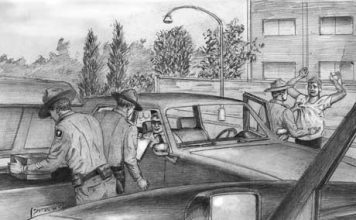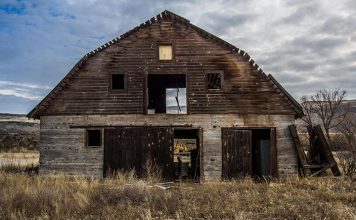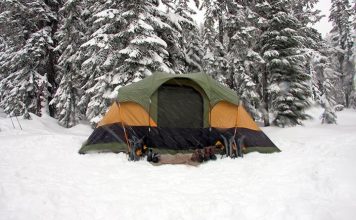 |
|
| Issue #113 • November/December, 2008 |
In Part I of this series of articles, we reviewed how home utility costs will be the next energy source expected to have major cost increases during the next two to three years. Although Part 1 of this series was written in early 2008, a just published article in USA Today Magazine announced that electrical utility rates are expected to rise 29 percent on average nationally this year. Oklahoma Public Service Company just announced a 25 percent rate increase. Potomac Edison is increasing their electric rates 29 percent this July to offset higher costs for coal.
|
Federal legislation expected to take effect in the next two years could force all coal-fueled power plants to double their current rates to pay for global-warming penalties being imposed by this new legislation. Since over half of all electric power in the United States comes from coal-fired power plants, this global-warming penalty legislation will be felt by most readers of this magazine.
In Part II of this series we reviewed how to read your electric meter and evaluate your actual utility costs. In this final part 3 I will help you identify where your electric costs are going, and how to reduce these costs without affecting your lifestyle.
Of course anything plugged into a wall outlet will consume electricity when operated, but many household appliances and electrical devices also consume some electricity 24 hours per day, 365 days per year when not operating. These phantom loads are typical for any appliance having a remote control or digital display that is always operating.
Simple energy reduction tips
I have several easy ways of reducing energy usage which work much more effectively than telling your kids (or spouse!) to turn off the lights, which, by the way, never works.
The first step is to find the “low-hanging fruit.” These are the easy-to-implement changes that will produce a significant energy reduction, while causing no loss in occupant comfort. The next easy step is to look for appliances or systems in the home that operate many hours per month so even a small improvement in their energy efficiency will result in a significant reduction in monthly energy usage due to their longer operating hours.

The easiest energy reduction change any homeowner can make with no technical training is to replace every non-decorative incandescent light bulb in the home with compact fluorescent light bulbs, lower wattage halogen lamps, or LED task lights depending on fixture type. If you want to keep that fancy light fixture over the dining room table that requires special incandescent bulbs then skip it, since we want to reduce your home’s energy usage without affecting lighting quality.
For re-lamping to be really cost effective, it should all be done at the same time and not spread out over time. Expect a total re-lamping to cost between $200 and $300, depending on the size of your home. Be sure to purchase these lamps and bulbs from a lighting distributor, which will offer a higher-quality and better selection of lighting products than found in a builder supply outlet. They will also offer the same bulb or tube in different “temperature” ranges, which can make the sometimes harsh light from a fluorescent lamp look like the softer yellow light from an incandescent bulb.

Expect to pay $30 to $40 per wall switch depending on wattage and features, and avoid low cost brands that can overheat or have poor reliability. The higher quality switches usually include adjustable sensitivity to avoid false responses, and an adjustable time delay for setting how long the lights remain on after someone leaves the room. A motion-controlled light switch is usually more cost effective when used to control multiple light fixtures, or higher wattage bulbs including exterior lights.
Heating and cooling system tips
|
Any forced-air furnace or air conditioning system will have an air filter or filters which need to be replaced regularly. Not only will this improve the quality of the air you breathe and reduce household dust, but a clean air filter will also reduce the electrical energy required to power the fan. In addition, allowing a filter to exceed its intended life will allow dirt to pass through and build up on heating and cooling coils and fan blades, which will further reduce air flow and increase fan energy usage.
I recommend replacing all air filters every change of season, or every three months. Any low cost filter you can clearly see through will have a very limited ability to trap smaller dirt particles, and may have a higher air-resistance than higher quality filters. All air filters are directional, so be sure to note the arrow indicating the direction of air flow through the filter when installing any new filter. Don’t be surprised if you find that the old filter was installed backwards, as many people do not know how filter media is layered from coarse to fine. Regular filter replacement is an easy way to reduce the energy required to power your central air handling unit, and since it operates many hours per month, this can be a real energy saver.
Your next easy step will be to replace any standard wall thermostat controlling a heating or cooling system with a digital-clock thermostat. These can be programmed to automatically change your occupied and unoccupied temperatures based on time-of-day and day-of-week. Be sure to select the appropriate model, as some electronic wall thermostats are not designed to control a multi-stage heating system such as a heat pump or dual-fuel boiler. Expect to pay about $75 to $125 for a quality model that includes a battery-backup memory, multiple time periods, and easy programming.
Advanced energy saving tips
Of course any electrical device can be purchased in a high-efficiency, low-energy version if you are willing to pay a higher cost. Unfortunately, if the device or appliance is not used regularly, its more efficient replacement may not result in any noticeable reduction in your monthly electric bill. For example, you could replace your 20-year-old table saw with a new saw having a super-efficient motor. But if you use this tool only a few times each year, it will not save enough on your electric bill to justify the higher cost replacement. However, appliances like a well pump, refrigerator, heat pump, furnace, or air conditioner each operate many hours per month, and even a small increase in operating efficiency can produce a very significant reduction in your monthly electric bill.
|
When buying or replacing any major appliance as a way to reduce energy usage and utility costs, be sure to check the yellow Federal Trade Commission’s “ENERGY-GUIDE” tag. This tag is now required on all new electric and gas appliances, and will indicate the lowest and highest cost to operate this appliance per year when compared to all manufacturers. The tag will also indicate what this specific model will cost to operate for a given cost of electricity or fuel. This allows seeing how this model compares to the same size and type appliance sold by other manufacturers.
The historic average electric bill for a “typical” three-bedroom single-family home in the United States has been 1,000 kWhs per month, but this may be increasing due to the higher use of entertainment equipment and home computers. How does this compare to your average monthly bill?
Table 1 is the Department of Energy’s breakout of a typical home’s energy usage, which I have modified to reflect geographical location. If you live in the southwest, your winter heating costs may be low, but your summer cooling costs could be high. If you live in the north or at higher elevations, your winter heating costs could be high while having no summer air conditioning costs. If you live in the east, your winter heating and summer cooling costs may be about equal.
According to Department of Energy averages, 60 percent of all single-family homes in the United States are heated with natural gas, 23 percent with electricity, 8 percent with fuel oil, 5 percent with propane, and 4 percent with wood or other fuels. This 2005 study also indicated that 78 percent of all single-family homes have air-conditioning systems, 95 percent have a clothes washer and dryer, and 63 percent have at least one desktop computer and printer. Using this data, you should have a fairly good idea of how well your home compares with these national averages.
If you followed my suggestions in Part II of this series, you should already know what your average cost is per kilowatt-hour for electricity. By selecting the column in Table 2 which most closely matches your local utility cost per kWh, you can see what your appliances are costing to operate each month.
Heat pump and air conditioner tips
If you have an electric space heater rated for a 1,000 watt heating output, it will consume 1,000 watts of electrical power for each hour of operation, which equals 3,413 BTU of heat per hour. However, a new heat pump having a Heating Seasonal Performance Factor (HSPF) of 10 would be able to produce this same 3,413 BTUs of heating output using only 1/10 the electrical power input of a standard electric heater.
|
If your heat pump is more than 15 years old, its HSPF rating could be as low as 5, meaning you only get 5 times the BTU heat output for a given kWh electrical input. All heat pumps manufactured after September 2006 are required to have a HSPF rating of 7.7 or higher. This means that your heating costs could be cut in half if you replace an older low HSPF rated heat pump with a new model having a HSPF rating of 8 to 10.
Unfortunately, heat pump operating efficiency starts to fall as the outside air temperature falls below 40 degrees, and most units switch to straight electric back-up heat around 25 degrees. If you live in an area that experiences extremely long and cold winters, a heat pump will not be your best choice to save heating energy.
A heat pump operating in cooling mode or an air conditioner is usually listed by its Seasonal Energy Efficiency Rating (SEER). Most models over 15 years old will usually have an SEER rating below 8. Units between 10 and 15 years old usually have a SEER rating of 10 to 12, while units sold today will have a SEER rating of 14 to 18, depending on cost. If you have a significant air-conditioning load each year, your cooling costs could be cut in half by replacing an older low-SEER rated heat pump with a new state-of-the-art heat pump.
Refrigerator/freezer tips
Table 2 indicated your refrigerator/freezer represented 8 to 9 percent of your total monthly electric bill. Federal Energy requirements have been implemented to improve the efficiency of refrigerators and freezers being sold in the US. All new brands and models are now much more energy efficient than earlier models. Since a refrigerator/freezer cycles “on” more than 30 percent of the day, replacing a refrigerator/freezer over 10-years old can result in a significant reduction in your monthly electric bill.
Washer and dryer tips
Unless you have a large family and wash and dry clothes several times each week, a washing machine will not require a significant amount of electricity to drive the electrical components. However, since many readers are on a well system, an older low-efficiency washing machine is much less efficient in the use of cold and hot water, and this excess water usage must be pumped and heated. This is where a new washer can really save in utility costs.
Older washers also do a poor job of removing water during the final spin cycle, and the damper clothes require more energy to dry in the dryer. If you wash and dry clothes more than one day per week and your washer is over 12 years old, you should consider replacing it with a high-efficiency low-water usage model.
Furnace and boiler tips
As noted earlier, 73 percent of homeowners heat with a gas, oil, or propane heating system. The fuel-fired furnace and heating boiler have probably experienced the largest improvement in energy efficiency of any appliance in your home. Since these central heating systems typically last longer than smaller appliances, it’s not unusual for 30 to 40-year old homes to still have the original forced-air furnace or hot-water boiler that was installed when the home was first built. Unfortunately, a 1960 to 1970 era furnace or boiler operated in the 65 to 70 percent fuel-efficiency range. However, almost any fuel-fired furnace or boiler sold today will have a fuel efficiency of 80 to 85 percent, and higher cost units are now available with up to 94 percent fuel efficiency.
If your heating system is more than 25 years old, it’s way past time to replace, even if it is still working properly. Be sure to also replace or reinsulate all associated forced-air ductwork or heat water distribution piping when replacing an older heating system old.
Hot water heater tips
|
Older hot water heaters were fairly efficient heating water, but their minimum tank insulation resulted in a significant standby loss of heat. Like the heat pump, refrigerator, and washer, new Federal Energy Reduction regulations have resulted in much more efficient hot water heaters with extremely thick tank insulation. If you have a large family and require lots of hot water and your hot water heater is more than 12 years old, it’s time to replace that unit with a new high-efficiency model.
If you currently have an older model gas hot water heater and do not have a large home or family, you may want to consider replacing your old hot water tank with a tankless hot water heater. Since there is no storage tank, there are no standby heating losses from a tank.
Well pump tips
When it’s time to replace your well pump, request a model having a high-efficiency pump motor, and have your plumber also replace that basketball-size expansion tank with a refrigerator-size model. These larger tanks are not expensive, and this will greatly reduce well pump “on and off” cycling each time you flush a toilet or take a shower. A well pump requires up to three times the normal run time electrical power each time it starts, and a larger expansion tank will allow multiple toilet flushes or longer showers before the water pressure drops enough to start the pump.
Conclusion
Making an existing home’s construction more energy efficient, especially an older home, can be very costly. Poorly insulated floors and ceilings, leaky single-pane windows, and drafty doors can significantly increase heating and cooling costs when compared to today’s tighter home construction methods and materials. I have not tried to minimize the importance of reducing these other energy losses in this series of articles, but making energy improvements in these areas usually requires the services of a licensed contractor and applying for a home improvement loan.
These articles were intended to identify those appliances and systems having a poor energy-efficiency that can be replaced by most homeowners without hiring an outside contractor or taking out a home improvement loan. If all of the suggestions I have made in this series of articles are followed, it’s reasonable to expect a 20 to 25 percent savings in your current utility costs. If you are in an area experiencing a rapid increase in utility rates, these energy-saving improvements can at least hold the line to offset these increased rates. Once these weekend-type projects have been completed and all low-efficiency lighting and appliances have been replaced, the resulting utility savings may be able to pay for these more extensive interior and exterior renovations that will require an outside contractor.
Of course if you are building a new home, it’s easy to understand how a slight increase in construction cost for selecting a thicker exterior insulation or more energy-efficient windows is easily justified. But making these changes to an older existing home can sometimes take 20 or more years to recover the renovation cost through lower utility bills.
For now, follow my easy energy saving tips by starting with the replacement of all incandescent lighting, then move on to replacing an older refrigerator, washer, and hot water heater. Finally, replace that older heat pump, air conditioner, well pump, or furnace. Working in this order will achieve the fastest energy-saving results for the lowest initial costs.
By monitoring your monthly utility bills as described in Part II of this series of articles, you should be able to document the results in your home’s energy usage as each improvement is made.
Good luck and good hunting…
[weaver_widget_area id=’articles_about_yago’ class=’text3′]






















